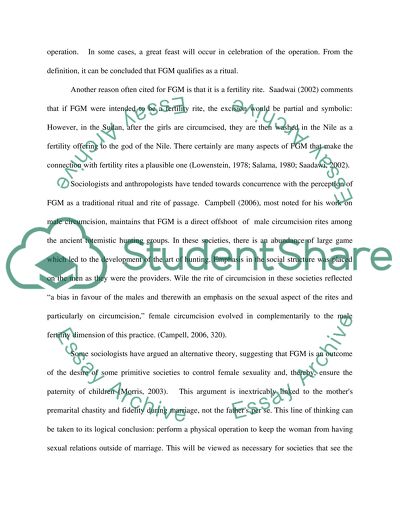Cite this document
(Female Genital Mutilation in Africa Term Paper Example | Topics and Well Written Essays - 2000 words, n.d.)
Female Genital Mutilation in Africa Term Paper Example | Topics and Well Written Essays - 2000 words. Retrieved from https://studentshare.org/social-science/1521008-female-genital-mutilation-in-africa
Female Genital Mutilation in Africa Term Paper Example | Topics and Well Written Essays - 2000 words. Retrieved from https://studentshare.org/social-science/1521008-female-genital-mutilation-in-africa
(Female Genital Mutilation in Africa Term Paper Example | Topics and Well Written Essays - 2000 Words)
Female Genital Mutilation in Africa Term Paper Example | Topics and Well Written Essays - 2000 Words. https://studentshare.org/social-science/1521008-female-genital-mutilation-in-africa.
Female Genital Mutilation in Africa Term Paper Example | Topics and Well Written Essays - 2000 Words. https://studentshare.org/social-science/1521008-female-genital-mutilation-in-africa.
“Female Genital Mutilation in Africa Term Paper Example | Topics and Well Written Essays - 2000 Words”, n.d. https://studentshare.org/social-science/1521008-female-genital-mutilation-in-africa.


